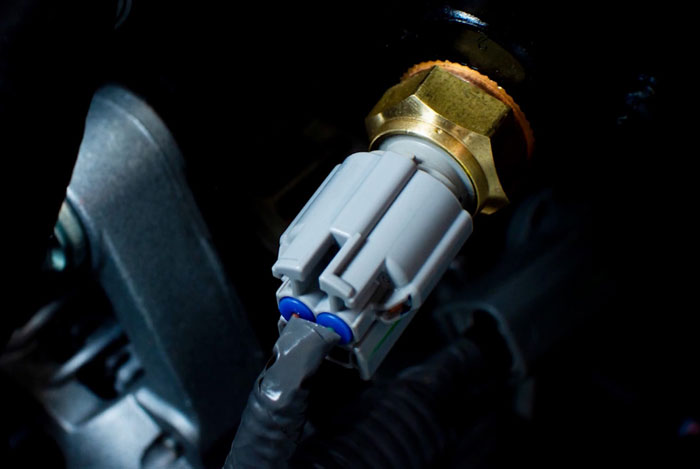So, picture this: you’re cruising down the road, feeling like you own the asphalt, when suddenly your car starts acting up. Is it possessed by a mischievous gremlin? Nah, it might just be your engine oil pressure sensor misbehaving. In my quirky guide, I’ll walk you through three telltale signs that your engine oil pressure sensor has decided to take a vacation without telling you.
Imagine you’re driving, and out of the blue, your dashboard lights up like a Christmas tree – not the festive vibe you were going for. Could it be your engine oil pressure sensor playing a prank on you? Let’s jump into the wacky world of car troubles and decode these mysterious symptoms together.
Understanding the Engine Oil Pressure Sensor
Ah, the mystical engine oil pressure sensor – the tiny hero hidden within your car’s engine, whispering tales of oil pressure to the lurking electronic monsters! Let’s unravel the secrets of this vital component together, shall we?

What is an Engine Oil Pressure Sensor?
This mini marvel is like the nerve endings of your car’s engine, keeping a watchful eye on the oil pressure to ensure everything runs as smoothly as a greased lightning bolt.
How Does It Work?
Picture this: as your engine revs up, the sensor feels the pressure changes in the oil flow, like a seasoned fortune teller reading the signs of the automotive universe.
Why is it Important?
Without this trusty sidekick, your engine could be as lost as a squirrel in a blizzard! The oil pressure sensor ensures your engine stays lubricated and doesn’t turn into a fiery ball of regret.
3 Common Symptoms of a Bad Engine Oil Pressure Sensor
Ah, the adventures of a faulty engine oil pressure sensor! Let me guide you through the wacky world of car troubles with these three common symptoms to watch out for.
Oil Pressure Warning Light Stays On
Picture this: you’re cruising down the road, feeling like a boss, when suddenly, the oil pressure warning light decides it wants to be the center of attention. It’s like having a drama queen in your car! When this light refuses to go off, it’s your engine’s way of saying, “Hey buddy, we have a situation here!” Don’t ignore it; pull over and give your engine a pep talk.
Erratic Oil Pressure Gauge Readings
Imagine you’re at a party, and your friend keeps changing their mood every second. That’s what happens when your oil pressure gauge readings start behaving erratically. One moment, everything seems normal, and the next, it’s all over the place, causing chaos like a squirrel at a picnic. Trust me; your engine isn’t playing mind games; it’s time to get it checked.
Unexpected Engine Noise
You’re driving along, enjoying the symphony of the road, when suddenly, your engine decides to join in with its own solo performance. Bangs, knocks, and rattles; it’s like a garage band gone rogue! These unexpected noises are your engine’s cry for help, signaling that all is not well under the hood. Time to visit your mechanic and get that engine serenading back on track!
How to Replace a Bad Engine Oil Pressure Sponsor
So, you’ve pinpointed that the culprit behind your engine woes is the oil pressure sensor. Don’t worry; I’ve got your back on how to replace this sneaky little troublemaker.
Getting Started
To tackle this task like a pro, park your car on a flat surface, pop that hood, and locate your engine oil pressure sensor. It’s usually near the oil filter or screwed into the engine block.
Necessary Tools
Grab your toolbox – you’ll need a ratchet set, a wrench, a drain pan, and, of course, that shiny new oil pressure sensor you’re about to install.
Step-by-Step Guide
Here’s the fun part: swapping out the old sensor for the new one. Follow these steps, and you’ll be back on the road in no time:
- Disconnect the battery – Safety first, always.
- Remove the faulty sensor – Unplug the electrical connector, use your tools to unscrew the old sensor, and be prepared for some oil spilling out.
- Install the new sensor – Carefully screw in the new sensor, reconnect the electrical connector, and make sure it’s snug.
- Reconnect the battery – Let’s bring some power back to the heart of your ride.
Testing, Testing
After all that hard work, it’s time to turn the key and start ‘er up. Check for any warning lights, listen for strange noises, and keep an eye on that oil pressure gauge – all systems go? Great job!
Conclusion
Well, folks, there you have it! We’ve uncovered the mysteries of the engine oil pressure sensor and its sneaky symptoms. Remember, when your car starts acting up, it might just be throwing a sensor tantrum. By following our handy guide to sensor replacement, you’ll be back on the road in no time. Stay safe out there, and may your oil pressure always be sensor-tional!
Frequently Asked Questions
Will a bad oil pressure sensor throw a code?
Yes, a bad oil pressure sensor can trigger a code like P0522, indicating low oil pressure. It can also result from faulty sensors, damaged oil pumps, or rarely, a defective PCM.
How do you know if your oil pressure sensor is bad?
A bad oil pressure sensor may cause the oil pressure warning light to illuminate on the dashboard, signaling low oil pressure.
What happens if you drive with a bad oil pressure sensor?
Driving with a faulty oil pressure sensor can lead to significant and irreversible engine damage, making it vital to address the issue promptly.
What does a bad oil pressure sensor sound like?
A bad oil pressure sensor can cause knocking or tapping sounds from the engine, indicating potential issues even if the pressure gauge appears normal.
How to tell if an oil temperature sensor is bad?
A faulty oil temperature sensor may result in erratic temperature readings on the gauge, jumping quickly from cool to hot, indicating a need for repair or replacement.

